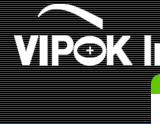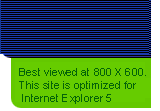




Orthokeratology
Overview
Orthokeratology is the reduction, modification or elimination of myopia
by the programmed application of rigid contact lenses today we may
need to modify this definition and add the control of myopia progression
with the applied use of rigid gas permeable contact lenses.
Since the 1960's, there have been many attempts by many to claim that their lens design results in the perfect Orthokeratology treatment. Basically, today there are four levels of designs available for Orthokeratology use. It is important to understand the purpose of Orthokeratology in order to select the best means of achieving this goal. The first is with a traditional flatter than base curve design for lower powers and smaller corneal curvature reductions. The second utilizes the three curve accelerated designs to help speed up the process and reach comfortable and predictable changes to within three diopters. The third is with the popular four curve advanced designs that is ever challenging and yet requires the most understanding. Although changes of up to six diopters are possible with this method, it is necessary to be able to understand the changes in order to troubleshoot and avoid undesirable effects. And lastly, the "XTREME" method patented by VIPOK® Inc. is the newest and most updated method of Orthokeratology. With this design and method, changes of up to -10.00 diopters of myopia is possible.
There have been many published studies conducted by university research groups to show that Orthokeratology is a safe and effective procedure. It is important for the practitioner to receive proper training before they should utilize this procedure. And it is just as important for the patient to learn proper maintenance and care for their lenses while continue to seek proper follow up care in the future. It is important for the practitioner and patient to both understand the limitations and possibilities of the Orthokeratology procedure. This is not a 100% successful method, and if with proper education of the practitioner and patient the success rate will definitely rise. The goal is to create a simple method of learning and utilizing this fascinating procedure to control and improve myopia.
There is a very important point that must be stress in explaining this procedure. Orthokeratology and Laser vision corrections are not competitors. Although Orthokeratology is very similar in concept in that there are changes to the cornea made to achieve changes in refraction, the two methods cater to very different population groups while attempting to reach the same goal of myopia reduction. As it is well known Laser vision correction procedures should only be preformed on adults while Orthokeratology's benefits to children are tremendous. It would be wonderful if this concept would eventually be widely accepted by the public. The idea of having a myopic child start with Orthokeratology for myopia control and eventually pursuing laser vision correction for more permanent change. It is up to the eye care provider to embrace this concept and offer it to the public.